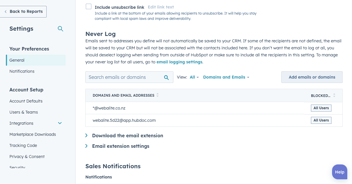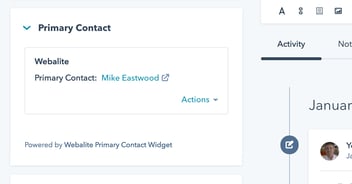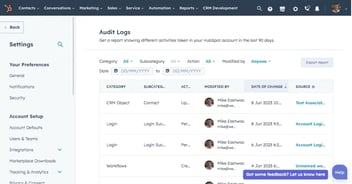How to import Contacts and Companies with multiple branches to HubSpot
Importing Contacts and Companies into HubSpot – when your Companies have multiple branches – used to be a nightmare. With the HubSpot CRM import tool it's much easier - here's how to run your import.
You just tried importing Contacts into HubSpot. You had Contacts in a Company with multiple branches, locations, or office and HubSpot (not-so-helpfully) put them all in the same Company. Here's a solution to keep your Contacts associated with different branches of the same Company.
Here's a detailed set of instructions for importing associated Contacts and Companies when they have similar emails and/or domain names.
Importing Contacts and Companies with multiple branches, locations or offices.
In the HubSpot CRM if you have "Automatically create and associate companies with contacts." turned on then HubSpot will try and help you - which is not always what we want. HubSpot will associate companies based on email address and domain, plus it will de-duplicate based on domain.
So, if you have multiple branches with the same, or similar domain names they could end up all in the same company.
You may have lots more properties you want to import so your spreadsheet may have many more columns than this simple example.

If you import this file normally you would end up with five people in the same company.
Why two files?
When you import only one file HubSpot uses the Domain Name as the key to link the Contact to the Company. Then you'll end up with all the Companies merged... or you may see this error (yes, we had Company Name in our file but no Company Domain Name).

So, by saving the same file twice (contacts.csv and companies.csv) we trick HubSpot into looking for a Unique Key rather than using the Domain Name as the unique identifier.
Before you start your import
Here's how to import them as separate companies and contacts associated with each company.
- Turn off "Automatically create and associate companies with contacts" OR exclude the domains to stop the association (see tips below).
- Check your data - a sanity check now could save lots of pain later.
- Save your data as a CSV file twice - exactly the same file - one named "Contacts.csv" and one named "Companies.csv".
HubSpot Import Step-by-Step
Here's how to import them as separate companies and contacts associated with each company.
- Import your contacts into HubSpot: Contacts > Import (button top right).
- Click Start and Import (button top right).
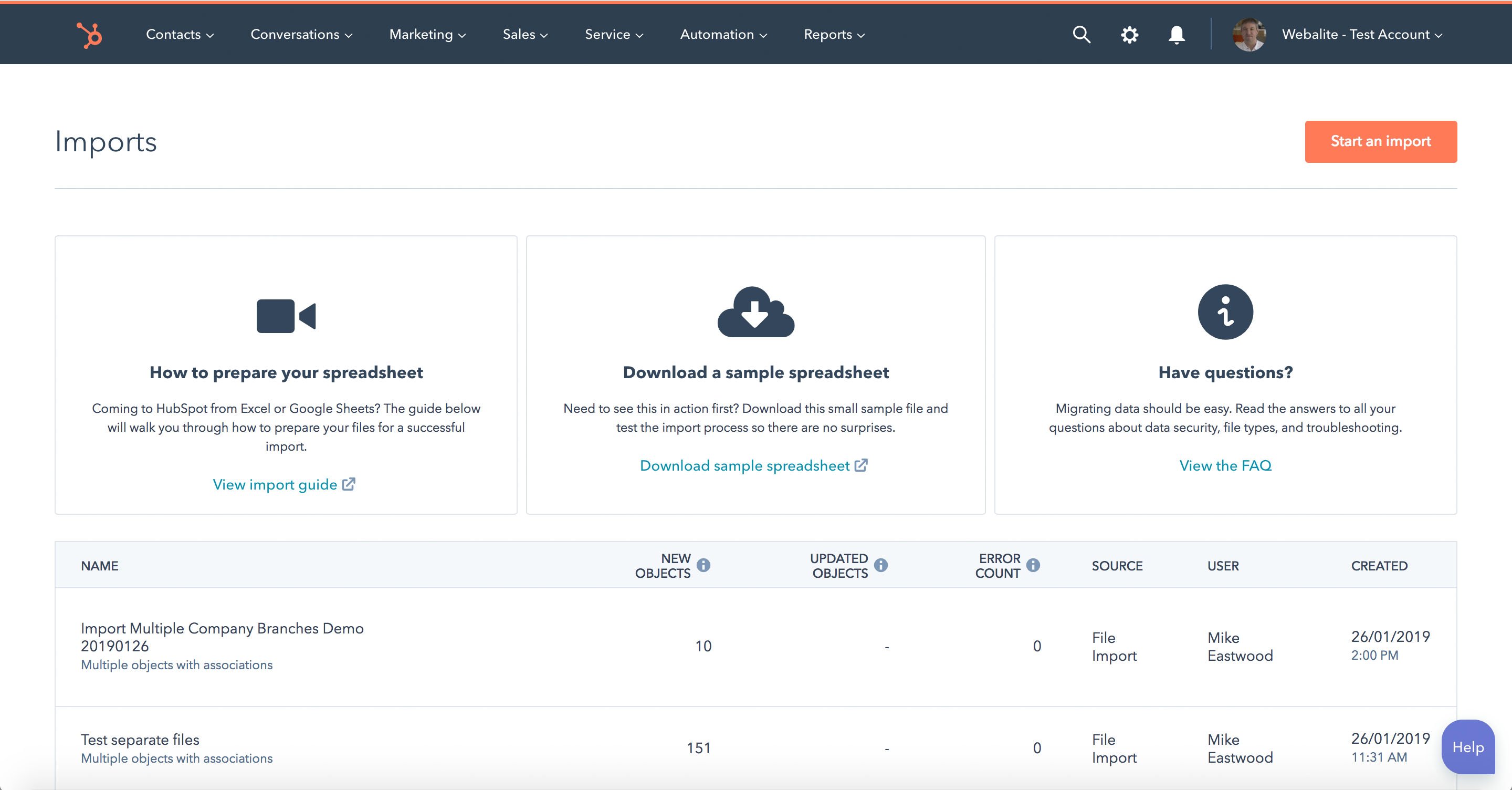
- What would you like to Import? Choose File from computer.
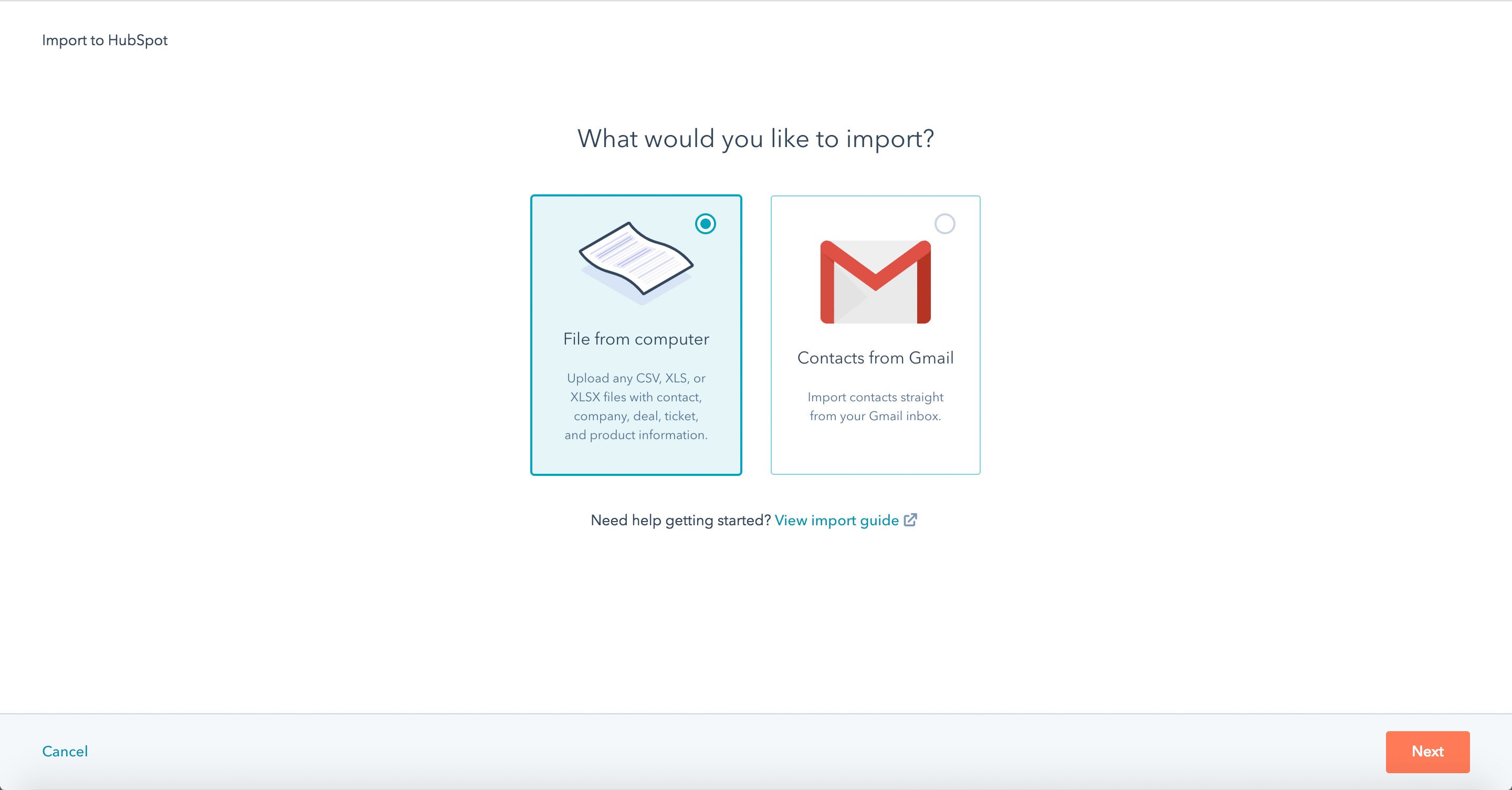
Make sure "Update existing records using "Object ID" exported from HubSpot." is NOT checked. Only use this if your CSV file came from HubSpot with HubSpot Object IDs. More below in the tips section.
Then click Next. - How many files are you importing? Choose Multiple files with Associations.
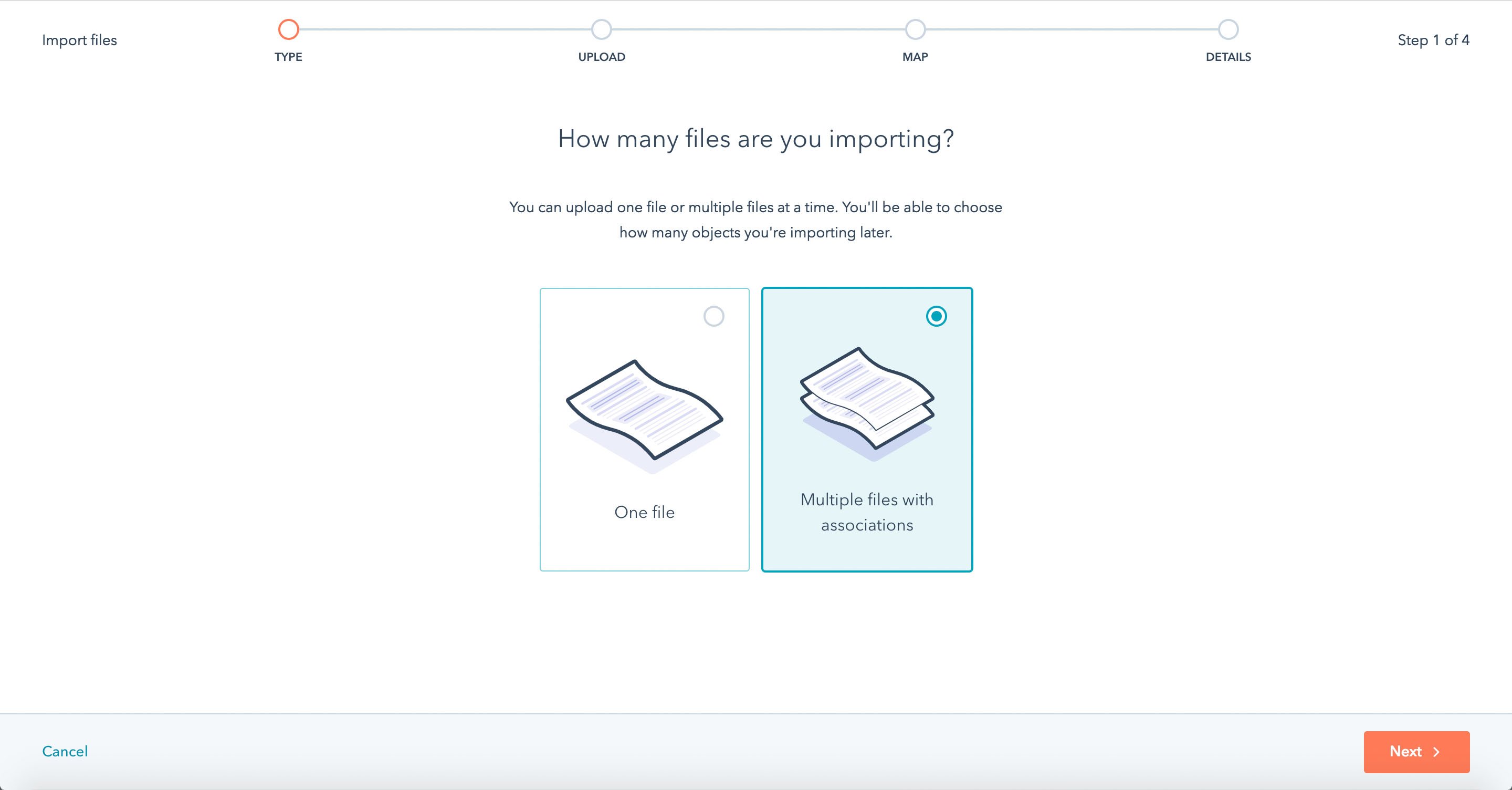
Then click Next. - Select the objects you's like to import and associate. Choose Contacts and Companies.
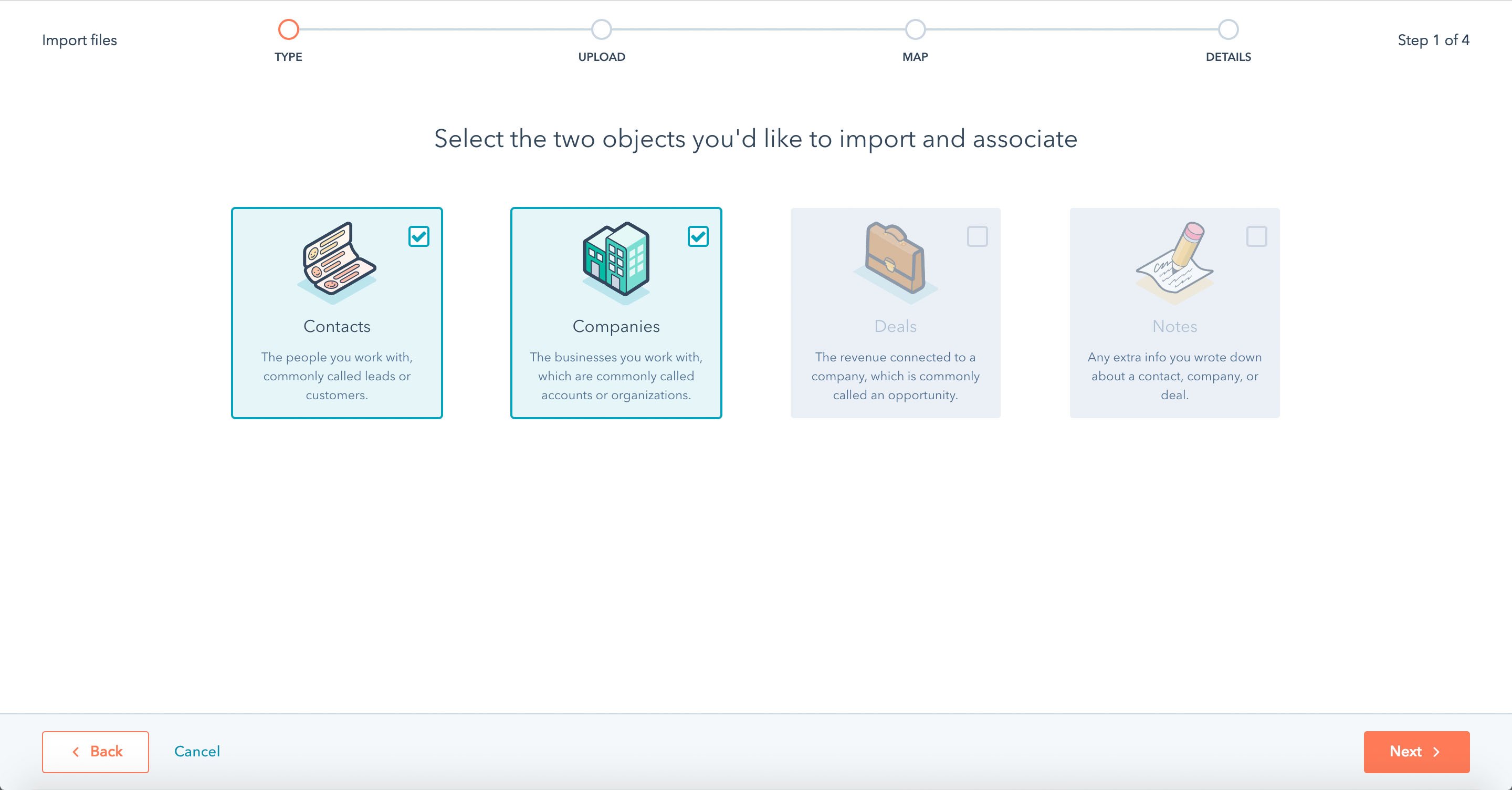
Then click Next. - Upload your files.
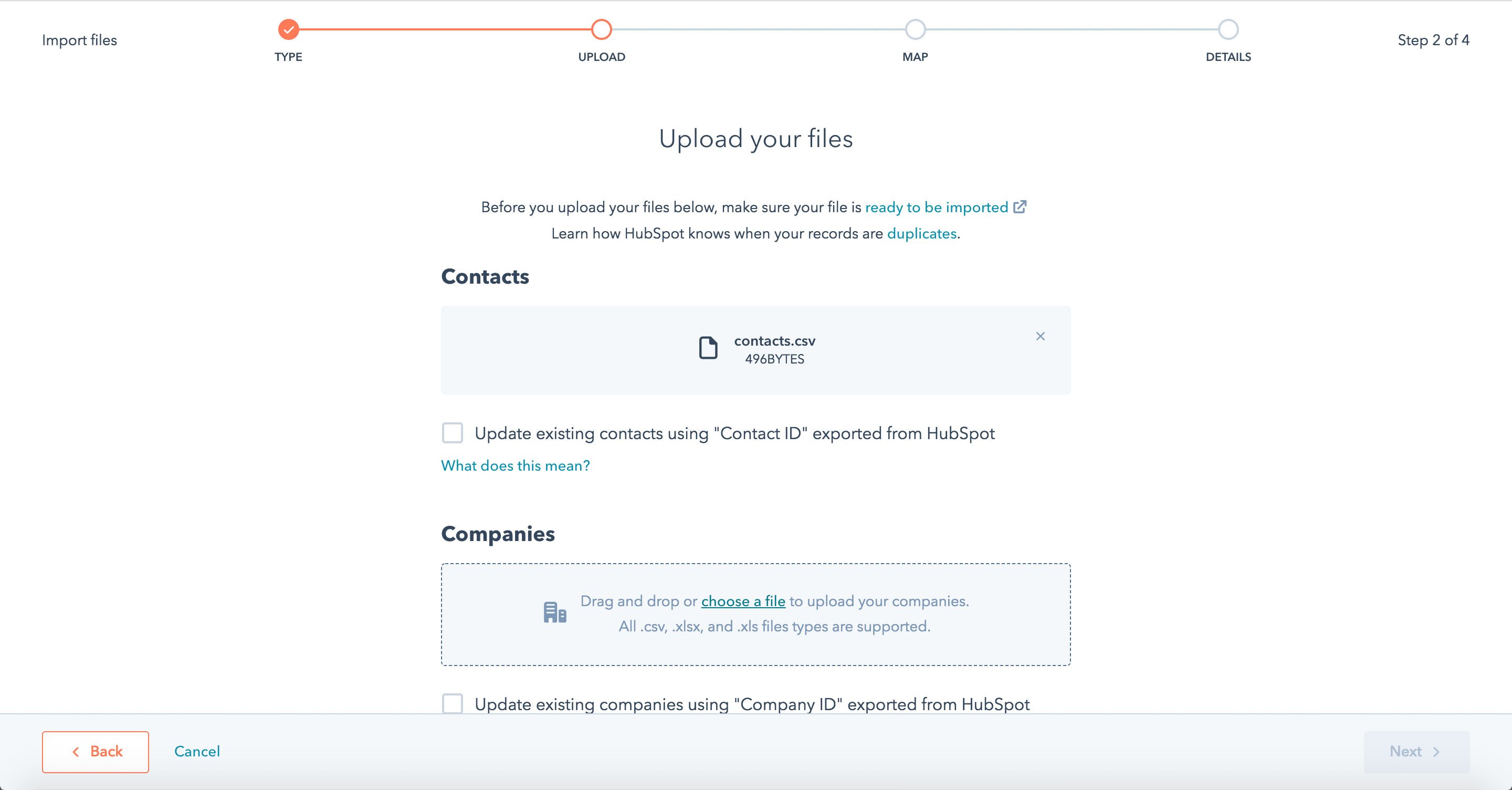
Choose and upload a file for Contacts and a choose and upload a file for Companies. (Yes, we know it's the same file but HubSpot doesn't).
Then click Next. - How to associate your data.
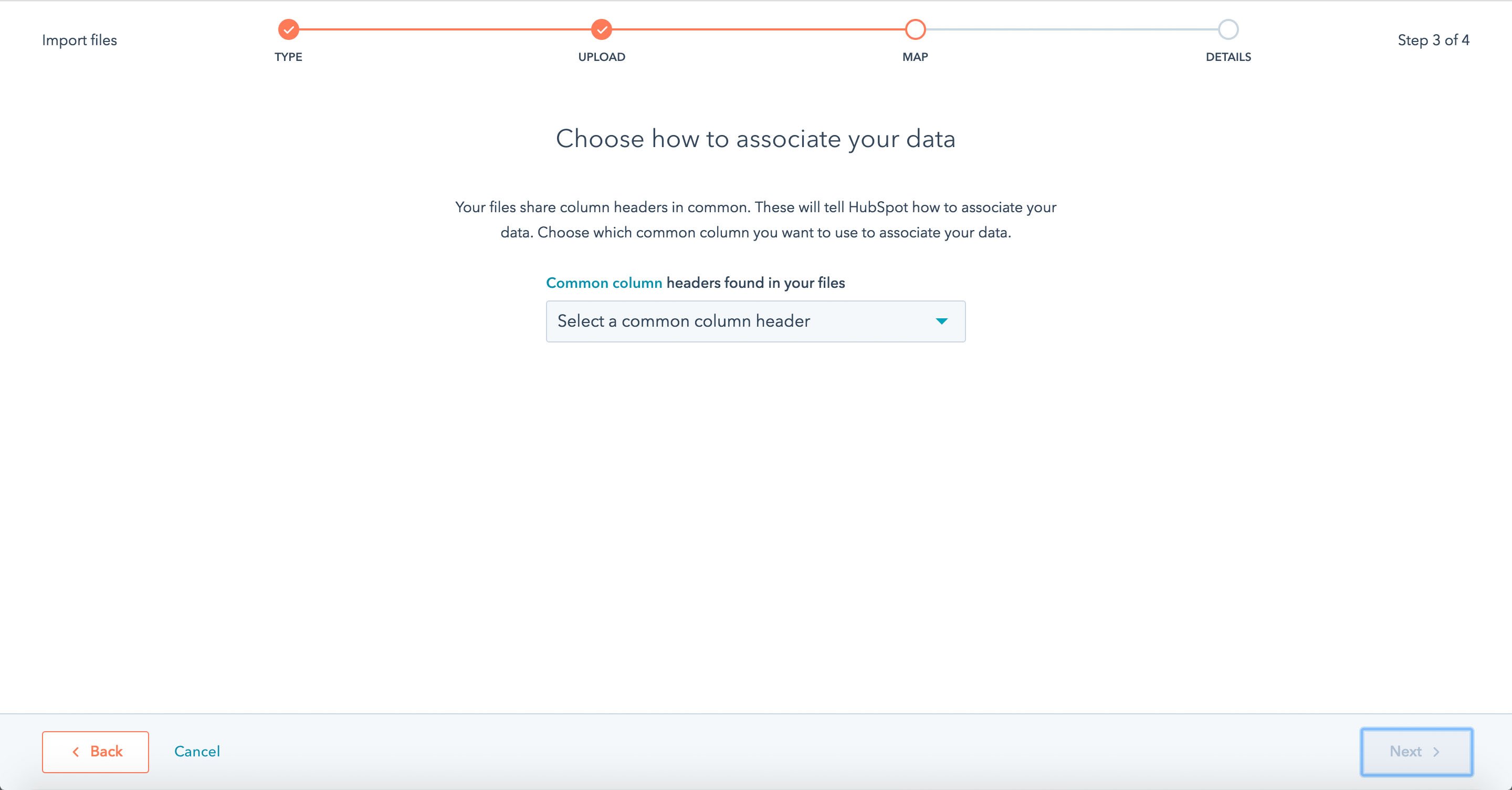
In the select list choose Unique ID. You will now be asked "Which object is Unique ID the unique key for?" choose Contacts.
Then click Next. - Map columns in your file to Contact Properties.
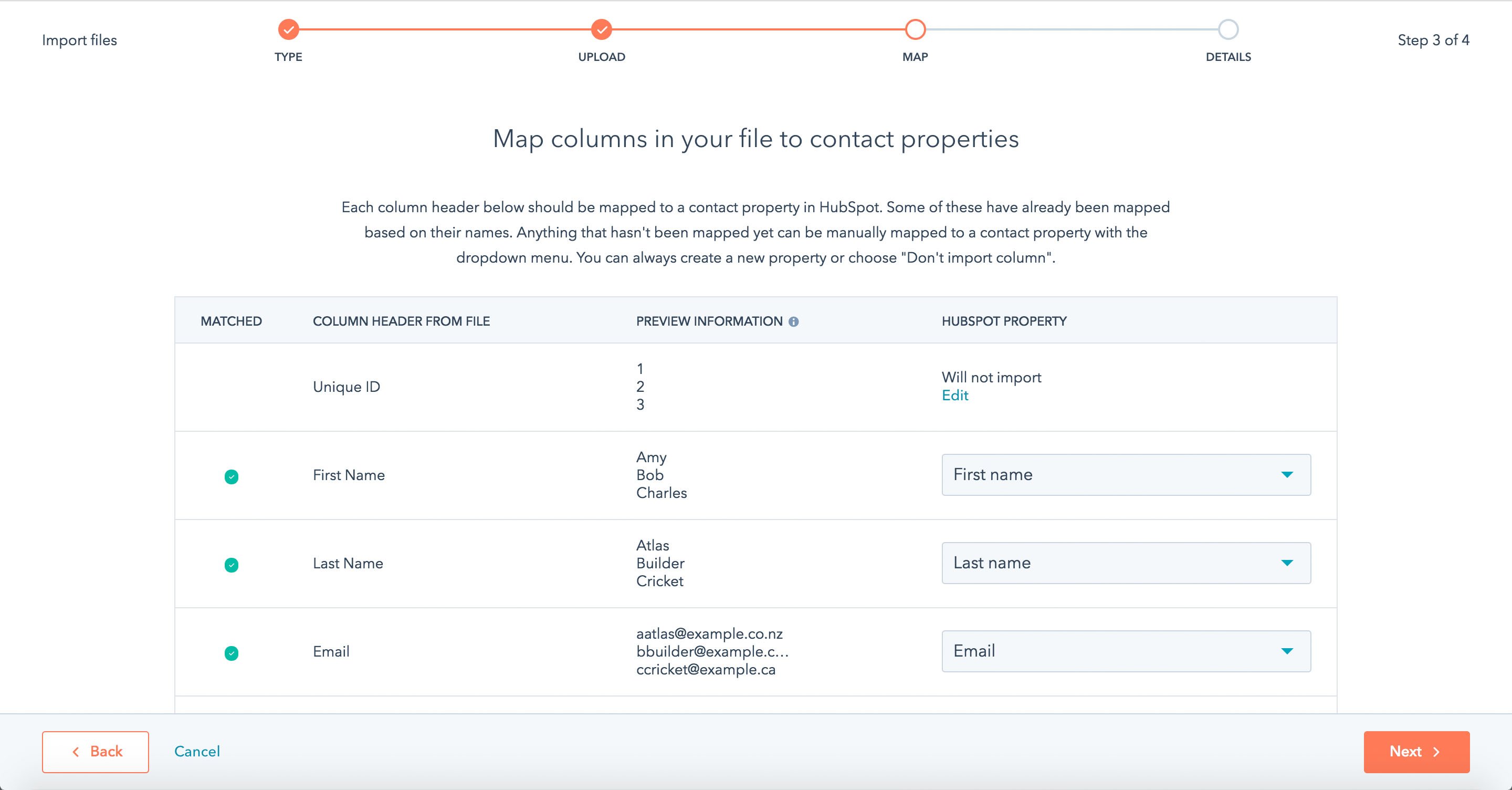
If you've named your columns, with a header row, this should be easy.
For each column map "Column Header From File" to corresponding "HubSpot Property".
For "Unique ID" choose "Don't import column" at the bottom of the pop-up.
Once you've mapped all the fields you want to include then click Next. - Map columns in your file to Company Properties.
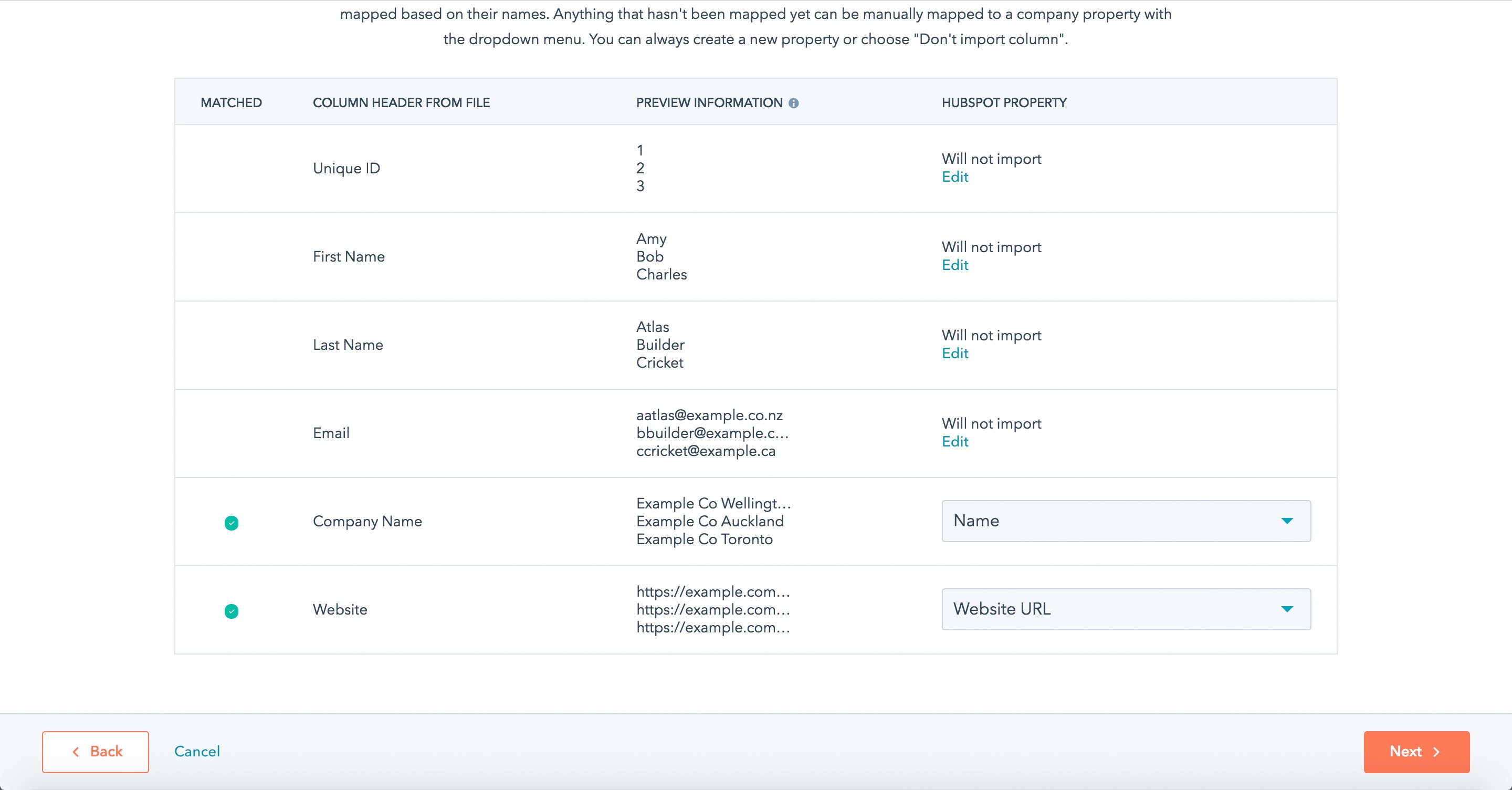
Now we repeat the mapping for the companies. You don't want discard the "Unique ID" so select "Don't import column".
You won't need "First name", "Last name" and "email" in your Company so choose "Don't import column".
You do want to map "Company Name" and "Website" so map them and any other properties you want to import.
Then click Next.
WARNING: you want to map the "Website" to the "Website URL" NOT the "Domain" otherwise HubSpot will glue them all into one company. - Name your import with a sensible name so you know which import it is.
Confirm you have permission to import these Contacts and Companies.
Then click Next. - Cross your fingers... you will see a message saying HubSpot is importing your Contacts and Companies.
If you have lots of companies this may take some time... you will receive an email, and an alert, when the contacts and companies are imported. - Double check your Contacts and Companies have imported successfully.
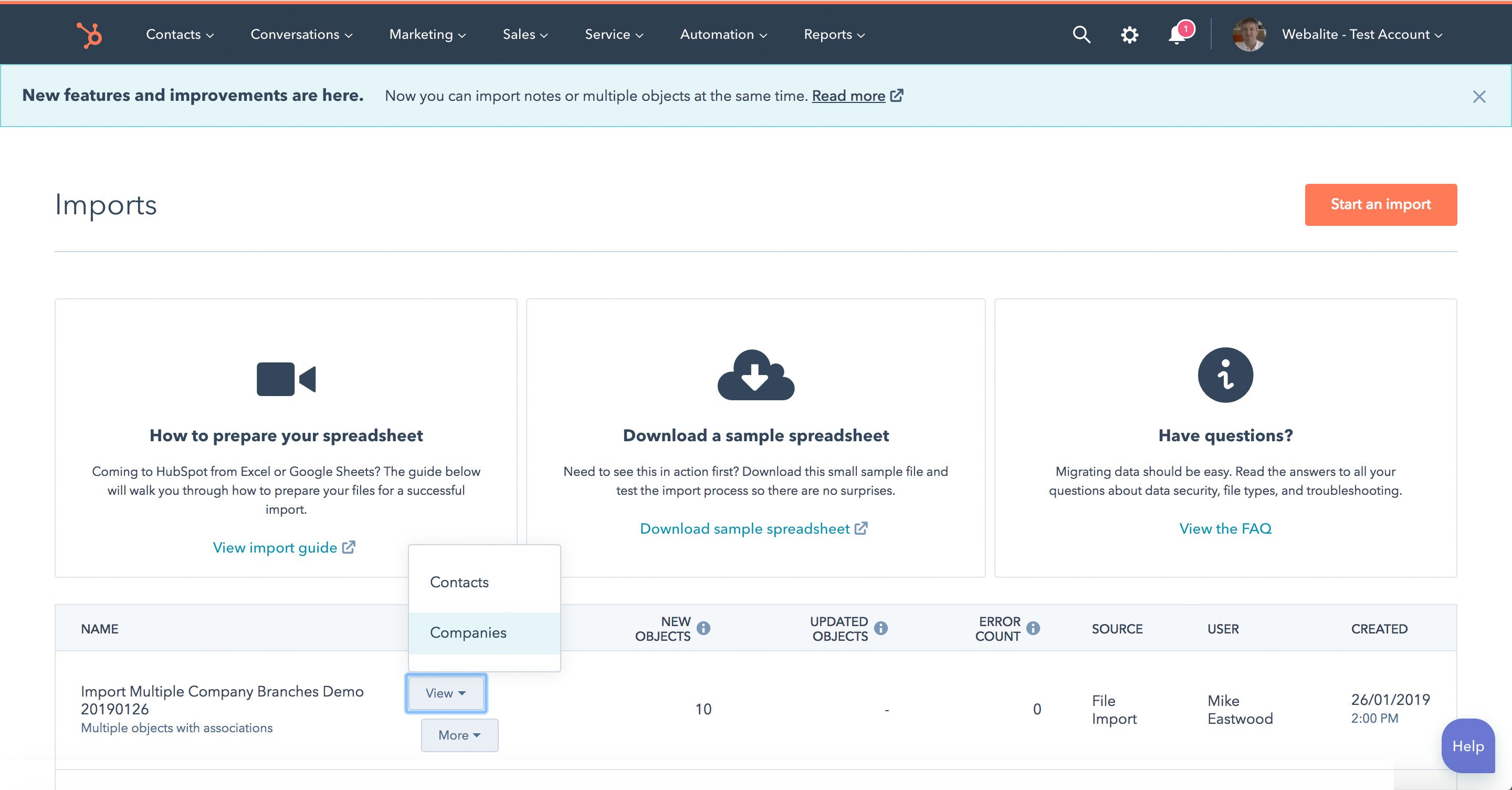 You will see, on the import screen, your import - which you named sensibly. Hover over the row and you will see View Contacts or Companies.
You will see, on the import screen, your import - which you named sensibly. Hover over the row and you will see View Contacts or Companies.
Important: just because it worked doesn't mean it worked - you need to double check. - Now you can relax...
If you think this is tricky then you should have tried the old way - what a nightmare - thank you HubSpot for making this sooooo much easier.
I got Import Errors! What do I do?
This is good - you can now find out what was wrong with your data. You can download the error log and work through the issues and correct your data.
For example, here's an easy error to fix:
More than one company was found with the domain 'example.com'. Unable to find single match to update
This is great – ok, maybe a bit tedious – now your data is going to be better than before because you've improved the quality.
Tips and tricks for importing into HubSpot
Here's a few tips and tricks we've picked up over the last few years.
One spreadsheet to rule them all.
If you have everything in one sheet your life will be easier - less likely to get errors trying to link things across multiple sheets.
In the example above we used an Excel Spreadsheet named "Import-all-201901120.xlsx" then we saved "Import-Contacts-20190120.csv" and "Import-Companies-20190120.csv". Pretty easy to see which file is which during the import and when you need to go back later to see which files were imported.
What's in a name?
Always use column headers in your import file - and name them the same as your HubSpot CRM Properties - it will make life much easier.
In our example above the file had a suffix "-20190126" so we know what the date was and, if there are multiple files, the files can be sorted by date easily.
Please stop helping me!
All software should come with a switch so we can stop the software trying to help.
I prefer exporting to CSV so Excel is not trying to "help me".
"Update exisiting records using "Object ID" exported from HubSpot"
This is useful if you need to manipulate the data you already have in HubSpot.
You can export data e.g. Contacts, make updates in Excel, then import back into HubSpot. The "
HubSpot Object ID" helps the importer to update your original record in the HubSpot CRM. If you map a Column to a Property, during the import, that Property in your HubSpot CRM will be overwritten with the data from the import file.
For example: if you import the "email" (Column) from your file then every email address (Property) will be overwritten for that Contact in the CRM - the import will update the Contact based on the "Object ID". If the Contact is not in HubSpot then it will be created.
Exclude domains so companies with contacts are not automatically being associated
You can opt-out, or exclude, a domain so HubSpot will stop trying to associate the contacts and companies (in our example below you would exclude example.com).
Need help?
Yep – completely I understand.
Because data management can be messy, time consuming and tedious it's really difficult for us to quote. And, it can be expensive because we don't know how long it will take.
So, I recommend you do as much as you can to make sure you data is clean and tidy before you contact us.
